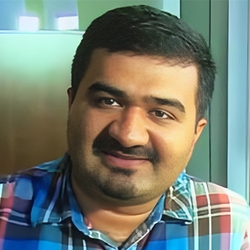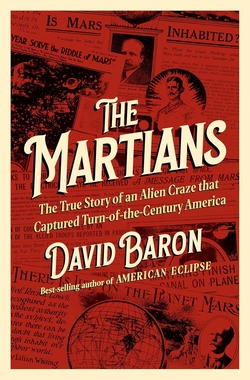As a quick follow-up to yesterday’s article on quantifying technosignature data, I want to mention the SETI Institute’s invitation for applicants to the Davie Postdoctoral Fellowship in Artificial Intelligence for Astronomy. The Institute’s Vishal Gajjar and his collaborators both in the US and at IIT Tirupati in India will be working with the chosen candidate to focus on neural networks optimized for processing image data, so-called ‘CNN architectures’ that can uncover unusual signals in massive datasets.

“Machine learning is transforming the way we search for exoplanets, allowing us to uncover hidden patterns in vast datasets,” says Gajjar. “This fellowship will accelerate the development of advanced AI tools to detect not just conventional planets, but also exotic and unconventional transit signatures including potential technosignatures.”
As AI matures, the exploration of datasets is a critical matter as these results from missions like TESS and Kepler are packed with both exoplanet data as well as stellar activity and systematics that can mislead investigators. Frameworks for sifting out anomalies should help us distinguish unusual candidates including disintegrating objects, planets with rings, exocomets and perhaps even megastructures and other technosignatures, all flagged by their deviation from our widely used transit models.
The data continue to accumulate even as our AI tools sharpen to look for anomalies. I can think of several Centauri Dreams readers who should find this work right up their alley. If you’re interested, you can find everything you need to apply for the fellowship here. The deadline for applications is March 15, 2025.



It will be interesting to see how they intend to use AI. AI using machine learning, is usually a classifier, to determine what is and isn’t in a class. If we assume most objects are natural, then the anomalies should be like needles in haystacks. Eliminate the straw and the needles will be exposed.
However, it seems to me, that this is not the case in practice. The anomalous objects and events are very common. Therefore training the AI to eliminate the known generates a large number of “not known” objects and events.
If, OTOH, one wants to train the AI to find anomalous objects and events, the training set has to have those described and data generated to simulate them. The problem is how to do that. To use Haldane’s famous quote “The universe is not only stranger than we imagine; it is stranger than we can imagine.” IOW, how can we even hope to use AI to look for such objects and events?
My guess is that the AI can only eliminate known objects and events that we have lots of data for, or detect objects and events that we can describe and simulate data for, e.g. transits of planets with a moon[s]. We probably cannot use AI to detect Dyson swarms, let alone transient em signaling.
I would be interested in what sorts of phenomena they hope to use AI to find, or at the very least, what approaches they hope to use to streamline searches by rapid analysis and sorting through huge numbers of phenomena quickly, hoping to expose a few interesting needles for further study in the haystack.
I agree, but perhaps this is not as problematic as you state.
Typically, we would want to distinguish noise from not-noise. It can work well for continuous signals, while episodic signals (e.g. FRB) can appear like not-noise. However, there are technological signals that are deliberately made noise-like, and not-noise-like patterns can be found in noise.
A perfect search (no false positives or false negatives) isn’t possible but it is possible to highlight candidates for further scrutiny. That eliminates a lot of drudgery, with the attendant risk of false positives and false negatives.
The use of AI to identify candidates is just one more imperfect tool. I don’t easily see, like you, how AI necessarily reduces false positives and false negatives with respect to more ordinary algorithms, and it could easily increase them. But it’s worth the experiment.
Might be able to set up training to distinguish unusual transits from mere stellar noise. With new classifications and vast data sets organised in time series Bayesian techniques can be used to theorise cause and effect, leading to new lines of observation, etc., etc.
Yes, you can do that because you are training on simulated and real transit data. I am fine with using this approach as a sieve to save time looking for phenomena you expect to find – the needles in a haystack. However, as I stated, this is looking for known phenomena, not unknown which have no data almost by definition.
How does one use AI to find entirely new phenomena – including different methods of signaling?
hi Paul –
the fellowship link at the end of the article seems to have some extra characters at the end.
it looks like it should be https://www.seti.org/davie-fellowship .
Thank you, Orion! Much appreciated. I’ve fixed the link.
Over the past two weeks, I have been examining the nearby M Dwarf stars within a distance of 22 light-years. This distance includes the nearest transiting M Dwarf LTT 1445, although the closest transiting planet is located around a K3 Dwarf, which is approximately 21 light-years away.
https://en.wikipedia.org/wiki/LTT_1445
https://en.wikipedia.org/wiki/HD_219134
In summary, there should be at least two to six transiting M Dwarfs among the 107 M Dwarfs within 22 light-years.
This discrepancy may be due to the fact that not enough of the 107 stars have been surveyed for transits. However, there is an ongoing program to monitor these nearby M Dwarfs.
Another possibility could be related to technosignatures. The zoo hypothesis may suggest that we are seen as an invasive species, there may be colonies or protected ecosystems on these planets. This could result in an artificial stealth system that conceals the transits of these planets from our observation. The planets transits might provide subtle indications that could be detected through closer inspection using artificial intelligence.
https://astrobiology.com/2025/02/ringworlds-and-dyson-spheres-can-be-stable.html
Ringworlds And Dyson Spheres Can Be Stable
By Keith Cowing
Status Report
astro-ph.SR
February 19, 2025
In his 1856 Adams Prize essay, James Clark Maxwell demonstrated that Saturn’s rings cannot be comprised of a uniform rigid body. This is a consequence of the two-body gravitational interaction between a ring and planet resulting in instability.
Similarly, it is also known that a so-called Dyson sphere encompassing a single star would be unstable due to Newton’s shell theorem. A surprising finding is reported here that both a ring and a sphere (shell) can be stable in the restricted three-body problem.
First, if two primary masses are considered in orbit about their common centre of mass, a large, uniform, infinitesimal ring enclosing the smaller of the masses can in principle be stable under certain conditions.
Similarly, a Dyson sphere can, be stable, if the sphere encloses the smaller of the two primary masses, again under certain conditions.
These findings extend Maxwell’s results on the dynamics of rings and have an interesting bearing on so-called Ringworlds and Dyson spheres from fiction.
Moreover, the existence of passively stable orbits for such large-scale structures may have implications for so-called techno-signatures in search for extra-terrestrial intelligence studies.
Colin R McInnes
Comments: 19 pages, 16 figures, 1 table, published in MNRAS
Subjects: Solar and Stellar Astrophysics (astro-ph.SR); Earth and Planetary Astrophysics (astro-ph.EP); Popular Physics (physics.pop-ph)
Cite as: arXiv:2502.12806 [astro-ph.SR] (or arXiv:2502.12806v1 [astro-ph.SR] for this version)
https://doi.org/10.48550/arXiv.2502.12806
Focus to learn more
Journal reference: MNRAS, 537, 1249-1267 (2025)
Related DOI:
https://doi.org/10.1093/mnras/staf028
Focus to learn more
Submission history
From: Colin McInnes
[v1] Tue, 18 Feb 2025 12:10:49 UTC (1,590 KB)
https://arxiv.org/abs/2502.12806
Astrobiology